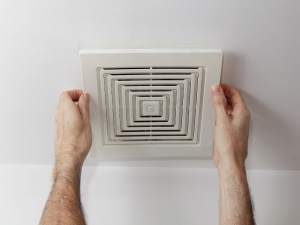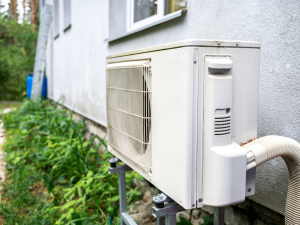Imagine it’s late at night and it’s unusually cold. Yet pulling up the covers, or even adding an extra blanket is not helping. You cannot fathom surviving the cold winter weather with a malfunctioning furnace. It’s one thing to wake up cold in the night and add extra covers, but it’s another when the furnace is either malfunctioning or not functioning at all. While most furnaces are designed to have a long and useful life, furnace problems can still occur and impede regular functioning. Luckily, these malfunctions can be detected and repaired, as long as regular maintenance is undertaken. If you have a furnace, knowing the most common problems and how you can navigate them not only help you avoid furnace malfunctions but also prolong the life of the furnace.
Here are the most common furnace problems and how they can be solved:
1. Failure to produce heat
This is the first indication of a faulty furnace. When installing a furnace, you expect it to distribute warm air efficiently in the home. And when this fails, or the heat supplied is inconsistent, then this is a cause for alarm. One of the reasons why the furnace will not produce heat is the wrong fan setting on the thermostat. With the wrong fan setting, the furnace blows air through the home. However, this air is not warmed up. Also, you might have forgotten to turn the thermostat setting to ‘heat’ or the temperature setting might be too low.
Before you panic and call in an HVAC expert, ensure you check the thermostat settings. If the heat produced is too low, increase the temperature setting. Similarly, check the thermostat fan setting and turn it to ‘Auto’ to get a heat supply in your home.
2. Blocked air filters
The air filters in a furnace ensure that debris and dust do not get their way through ducts. Sometimes, this residue can block the air filters, restrict the flow of air from the furnace or even worsen the quality of indoor air. Furnace filter blockage can even damage the limit switch.
Furnace filters should be replaced regularly. If you have a large family or pets, ensure that you replace the filters monthly or at least once during the winter. You can check whether the filter is blocked by holding it against the light. The light should pass through the filter easily. Replacing the filter is a DIY-friendly and easy task. However, if you are unsure of how to go about it, always ask for help from an HVAC specialist. Wrongly installed filters can lead to premature breakdowns and even fire hazards.
3. A faulty ignition or pilot
Your furnace could be malfunctioning due to a faulty pilot light. Gas furnaces depend on pilot and ignition systems to operate. With a faulty ignition, there is no flame to ignite the fuel and warm air, hence the supply of cold air. If you are using an older furnace model, you are unlikely to experience this problem since these models have a continuously lit pilot light that ensures that the flame does not go out. However, newer models use electronic ignition. If this is faulty, the flame will not catch, and the furnace will not produce warm air. The most common indication of a malfunctioning pilot light is the absence of pilot light. This is the light that burns orange or yellow when the furnace is turned on. Similarly, if the furnace no longer makes rumbling noises when turned on, then you might want to have it checked.
The pilot light can be relit following the owner’s manual. However, it is always wise to contact an HVAC specialist to undertake the necessary repairs.
4. Frequent cycling
If your furnace cycles on and off, this could be an issue with temperature settings on the thermostat. Sometimes, short cycling does not always indicate a malfunctioning furnace. However, if it becomes frequent without reaching the set temperature, it is an indication of a furnace overheating issue that is caused by the lack of airflow. When it gets too hot, the safety switch causes the shutdown.
The first culprit for a short cycling furnace is a clogged air filter. A clogged air filter restricts the flow of air, causing overheating. To prevent overheating, the safety switch goes off, hence the short cycles. To solve short cycling furnace issues, ensure that the thermostat temperature settings are within the acceptable range. Replacing the filters may also allow restricted air to flow easily. If neither of the solutions work, call an HVAC specialist for a diagnosis.
5. Noisy furnace
While most furnaces make noise as they operate, be on the lookout for uncommon sounds. For instance, you might hear clicks as the thermostat reaches the set temperature or a whooshing noise as air travels through the ductwork. If you hear a rattling noise, a loud rumbling, or other strange noises, then there could be something wrong with the furnace.
Strange furnace noises could be an indication of furnace problems, from minor to major ones. As such, we do not recommend DIY solutions. Rather, call a qualified technician to diagnose and solve the problem.
6. Leaking water
A pool of water around the base of your furnace could be a sign of condensed leaks. Most high-efficiency furnaces have a cool exhaust feature or PVC exhaust pipes as opposed to metal pipes. They are also equipped with condensation pipes that drain condensed water. This can, however, leak or become clogged, leading to a pool of water around the furnace.
The best solution for leaking water around the furnace is to call in an expert to assess the situation and make the necessary repairs.
7. Foul odors
If you notice that the air coming from the furnace has a foul smell, you could be dealing with a dirty filter that requires urgent replacement. Similarly, a dead rodent could be stuck in the system. Even worse, it could be a gas leak problem. To solve this, start by washing or replacing the dirty filter. If this does not help, call in a technician. If the foul odor is similar to that of rotten eggs or a sulfur-like smell, stay out of the home until a specialist arrives.
When to call in an HVAC specialist
While you can undertake mundane checks on your furnace, most issues require attention from a trained HVAC specialist. DIY furnace repairs can be very dangerous. In most instances, calling a professional to diagnose and undertake repairs is the safest option. And to prevent regular furnace breakdowns, ensure you schedule furnace maintenance checks from an HVAC-qualified technician.








